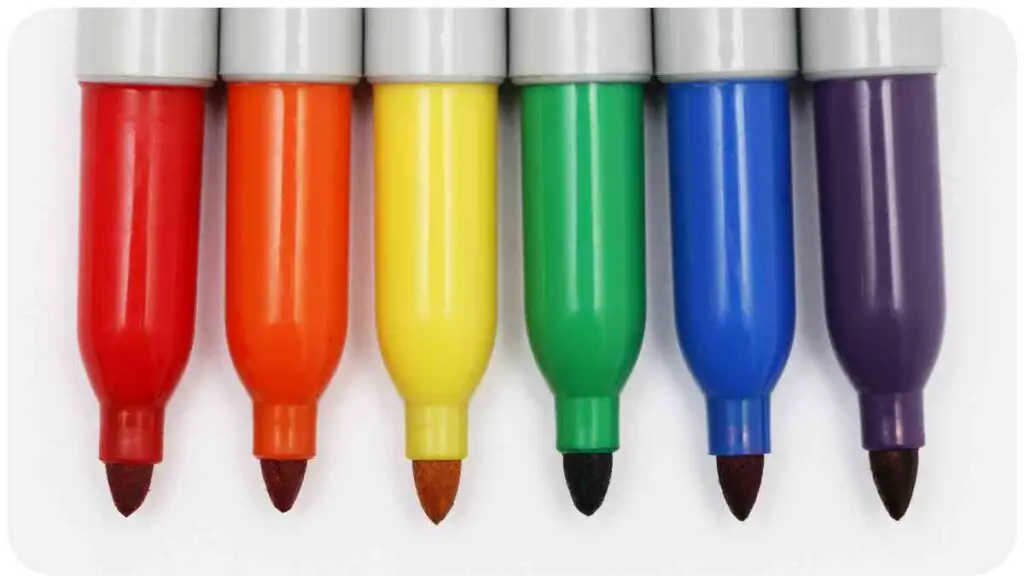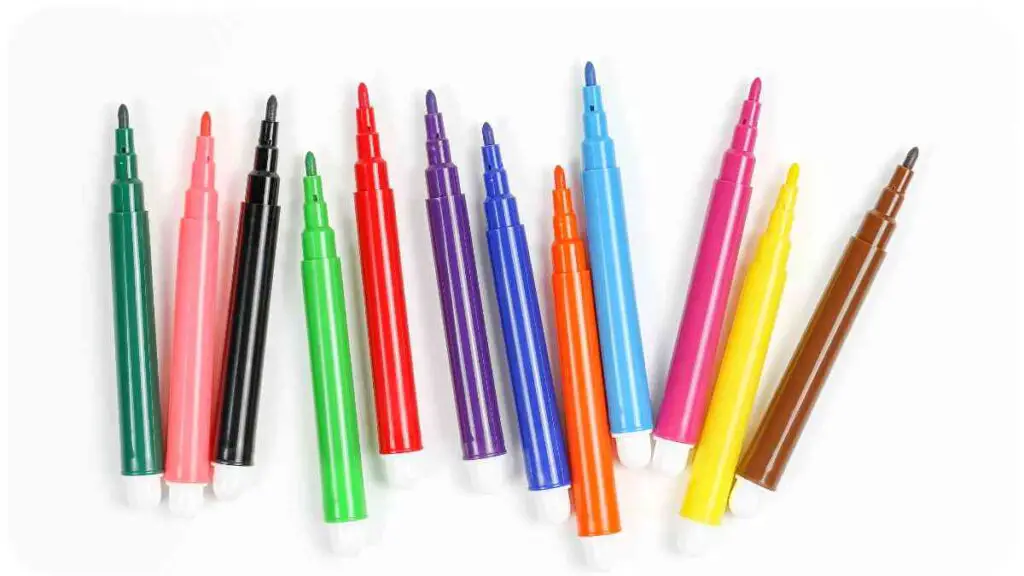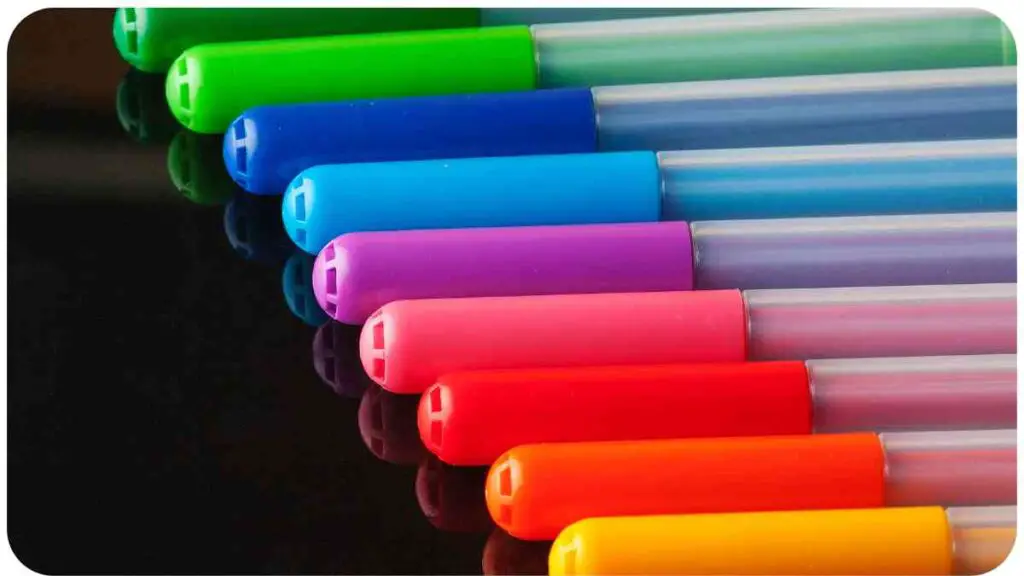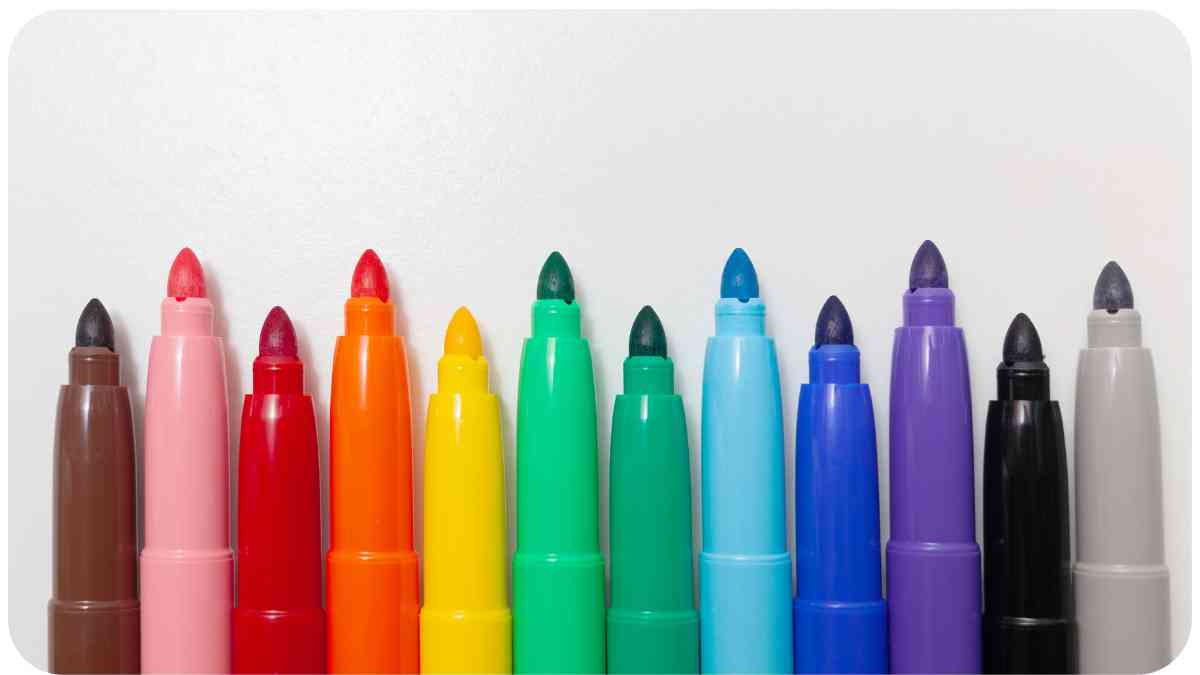Paint markers are versatile tools used by artists, DIY enthusiasts, and professionals alike. However, nothing is more frustrating than grabbing your favorite marker only to find it dried out.
Fear not! In this guide, we’ll explore troubleshooting tips and DIY solutions to revive your dried out paint marker and keep it in top condition.
| Key Takeaways |
|---|
| 1. Reviving dried out paint markers requires understanding the common causes of drying and employing effective troubleshooting techniques. |
| 2. Techniques such as shaking well, priming the marker, and proper storage can help prevent markers from drying out in the first place. |
| 3. DIY solutions like alcohol revival, hot water baths, and acetone methods can often revive dried out markers effectively. |
| 4. Regular use and maintenance are essential for prolonging the lifespan of paint markers and preventing future drying issues. |
| 5. Knowing when to replace a marker is important; persistent drying, tip damage, and inconsistent results are signs it may be time for a replacement. |
2. Understanding Paint Markers

Before we dive into troubleshooting, let’s understand the anatomy of a paint marker. These markers consist of three main components: the barrel, the nib or tip, and the reservoir filled with paint. The tip is crucial as it controls the flow of paint onto the surface.
Discover the wonders of non-toxic paints and ensure safe creativity for your projects. Learn more about non-toxic paints to unleash your artistic potential without harm.
| Component | Function |
|---|---|
| Barrel | Holds the paint and houses the reservoir |
| Nib/Tip | Controls the flow of paint onto the surface |
| Reservoir | Stores the paint for consistent application |
3. Signs of a Dried Out Marker
How do you know if your paint marker is dried out? Look out for these signs:
- The tip feels dry and scratchy.
- The marker fails to produce consistent lines or colors.
- The paint appears lumpy or separated.
- There’s minimal to no paint flow when using the marker.
4. Common Causes of Drying Out

Understanding why paint markers dry out can help prevent future issues. Some common causes include:
- Improper Storage: Leaving the marker uncapped or storing it horizontally can lead to evaporation and drying out.
- Infrequent Use: Markers left unused for extended periods are more prone to drying out.
- Quality of Marker: Lower quality markers may dry out faster due to inferior seals or materials.
When your sewing machine jams, don’t panic! Follow our step-by-step guide to troubleshoot and fix it quickly. Get back to your sewing projects with ease by learning sewing machine jam fixes now.
5. Troubleshooting Tips
Tip 1: Shake Well
Sometimes, the paint settles at the bottom of the marker, causing the tip to dry out. Give the marker a good shake to redistribute the paint evenly.
Tip 2: Prime the Marker
If the marker has been sitting unused for a while, it may need priming to get the paint flowing again. Press the nib against a scrap piece of paper or cardboard until the paint starts to flow consistently.
Tip 3: Store Properly
Store your markers vertically with the tip facing downwards. This helps prevent air from entering the reservoir and drying out the paint.
Tip 4: Rehydrate the Tip
If the tip is already dried out, try rehydrating it by dipping it in water or a solvent suitable for the type of paint. This can soften the dried paint and restore the tip’s functionality.
6. DIY Solutions
If your marker is still not cooperating, it’s time to try some DIY solutions to revive it. Here are three methods you can try:
Facing issues with your sewing machine? Don’t fret! Our comprehensive guide will walk you through troubleshooting steps. Dive into the world of sewing with confidence by mastering sewing machine troubleshooting techniques.
Solution 1: Alcohol Revival
Alcohol can help break down dried paint and restore the marker’s flow. Dip the tip of the marker into rubbing alcohol or isopropyl alcohol for a few minutes, then test it on a scrap surface. Repeat as necessary until the paint flows smoothly again.
| Materials Needed | Instructions |
|---|---|
| Rubbing Alcohol | Dip the marker tip into alcohol for a few minutes. |
| Scrap Surface | Test the marker on a scrap surface to check the flow. |
| Paper Towel | Wipe off excess alcohol before using the marker. |
Solution 2: Hot Water Bath
A hot water bath can help soften dried paint and rejuvenate the marker. Fill a cup or container with hot water (not boiling) and immerse the tip of the marker for a few minutes. Test the marker on a scrap surface periodically until the paint flows smoothly.
| Materials Needed | Instructions |
|---|---|
| Cup or Container | Fill with hot water (not boiling). |
| Scrap Surface | Test the marker periodically until the flow improves. |
| Paper Towel | Wipe off excess water before using the marker. |
Solution 3: Acetone Method
For stubborn dried paint, acetone can be effective in breaking it down. Dip the tip of the marker into acetone (nail polish remover) for a few minutes, then test it on a scrap surface. Be cautious when using acetone, as it can damage certain surfaces and materials.
Keep your oil paint brushes in top condition with our quick and easy cleaning guide. Maintain the quality of your brushes and extend their lifespan. Learn how to clean oil paint brushes effectively for flawless artwork every time.”
| Materials Needed | Instructions |
|---|---|
| Acetone (Nail Polish Remover) | Dip the marker tip into acetone for a few minutes. |
| Scrap Surface | Test the marker on a scrap surface to check the flow. |
| Gloves | Wear gloves to protect your skin from acetone exposure. |
7. Prevention Techniques
Prevention is key to avoiding dried out paint markers in the future. Here are some techniques to help prolong the life of your markers:
Technique 1: Recap After Use
Always recap your markers immediately after use to prevent evaporation and drying out. This simple habit can significantly extend the lifespan of your markers.
Technique 2: Store Vertically
Store your markers vertically with the tip facing downwards. This helps keep the paint flowing towards the tip and prevents air from entering the reservoir.
Technique 3: Use Regularly
Regular use can help prevent paint from drying out inside the marker. Even if you’re not using a particular marker for a project, give it a quick test on a scrap surface periodically to keep the paint flowing smoothly.
8. When to Replace Your Marker

Despite your best efforts, there may come a time when your marker simply can’t be revived. Here are some signs that it’s time to replace your marker:
Revive your dried-out paint marker with our troubleshooting tips for seamless crafting experiences. Don’t let a dried marker ruin your project. Follow our guide on how to fix a dried-out paint marker and get back to creating vibrant art.
- Persistent Drying: If you’ve tried multiple troubleshooting methods without success, it may be time to retire the marker.
- Damage to Tip: If the tip of the marker is frayed, damaged, or worn down beyond repair, it’s best to replace it.
- Inconsistent Results: If the marker consistently produces uneven lines or colors despite your efforts to revive it, it’s probably reached the end of its lifespan.
Remember, investing in high-quality markers can save you time and frustration in the long run. Consider upgrading to markers with better seals and materials to prevent drying out.
9. Conclusion
Reviving a dried out paint marker is a common problem faced by artists, DIYers, and professionals. By understanding the causes of drying out and employing effective troubleshooting techniques, you can breathe new life into your markers and continue creating with confidence.
Remember to shake well, prime the marker, and store it properly to prevent future issues. If all else fails, try DIY revival methods such as alcohol, hot water baths, or acetone. And don’t forget to practice prevention techniques to prolong the lifespan of your markers.
With these tips and tricks, you’ll never be sidelined by a dried out marker again. Happy creating!
Further Reading
- Unclogging Paint Pens: Learn how to unclog paint pens and keep them in optimal condition with this detailed tutorial.
- Troubleshooting Acrylic Paint Pen: Discover common issues with acrylic paint pens and how to troubleshoot them effectively.
- How to Use Paint Pens: An Easy Way to Get a Watery Marker Back on Line: This article provides easy-to-follow instructions on using paint pens and reviving watery markers for seamless artwork.
FAQs
How do I know if my paint marker is dried out?
If your paint marker feels dry and scratchy, fails to produce consistent lines or colors, or shows minimal to no paint flow, it may be dried out.
Can I revive a dried out paint marker?
Yes, you can often revive a dried out paint marker using various techniques such as shaking well, priming the marker, or using DIY revival methods like alcohol or hot water baths.
How should I store my paint markers to prevent them from drying out?
Store your paint markers vertically with the tip facing downwards to prevent air from entering the reservoir. Always recap them after use to minimize evaporation.
Are there any DIY solutions for reviving dried out paint markers?
Yes, DIY solutions such as dipping the marker tip in alcohol, giving it a hot water bath, or using acetone (nail polish remover) can help soften dried paint and restore the marker’s functionality.
When should I consider replacing my paint marker?
You should consider replacing your paint marker if it consistently fails to revive despite troubleshooting efforts, if the tip is damaged beyond repair, or if it consistently produces inconsistent results.

Hellen James is the creator of Unified Crafts and has been crafting since she was a kid accompanied by her mom to the craft store, where she was free to choose whatever ignited her imagination.

